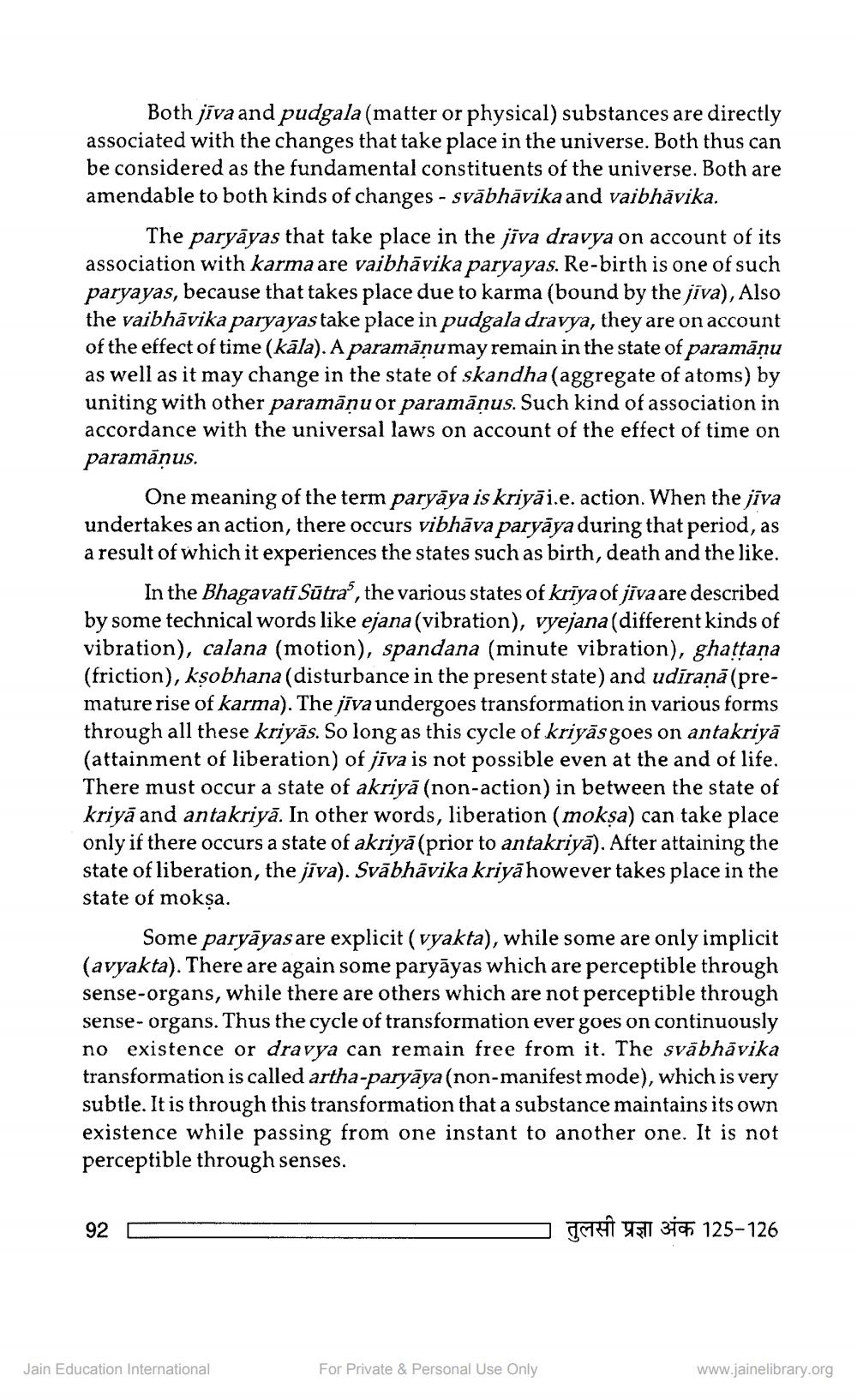________________
Both jiva and pudgala (matter or physical) substances are directly associated with the changes that take place in the universe. Both thus can be considered as the fundamental constituents of the universe. Both are amendable to both kinds of changes - svābhāvika and vaibhāvika.
The paryayas that take place in the jïva dravya on account of its association with karma are vaibhāvika paryayas. Re-birth is one of such paryayas, because that takes place due to karma (bound by the jïva), Also the vaibhavika paryayas take place in pudgala dravya, they are on account of the effect of time (kāla). A paramāņu may remain in the state of paramāņu as well as it may change in the state of skandha (aggregate of atoms) by uniting with other paramāṇu or paramāņus. Such kind of association in accordance with the universal laws on account of the effect of time on paramāņus.
One meaning of the term paryāya is kriyāi.e. action. When the jïva undertakes an action, there occurs vibhāva paryāya during that period, as a result of which it experiences the states such as birth, death and the like.
In the Bhagavati Sūtra, the various states of kriya of jīva are described by some technical words like ejana (vibration), vyejana (different kinds of vibration), calana (motion), spandana (minute vibration), ghaṭṭana (friction), kṣobhana (disturbance in the present state) and udīraṇā (premature rise of karma). The jīva undergoes transformation in various forms through all these kriyās. So long as this cycle of kriyas goes on antakriyā (attainment of liberation) of jīva is not possible even at the and of life. There must occur a state of akriyā (non-action) in between the state of kriyā and antakriyā. In other words, liberation (mokṣa) can take place only if there occurs a state of akriyā (prior to antakriyā). After attaining the state of liberation, the jīva). Svābhāvika kriyā however takes place in the state of mokṣa.
Some paryayas are explicit (vyakta), while some are only implicit (avyakta). There are again some paryāyas which are perceptible through sense-organs, while there are others which are not perceptible through sense- organs. Thus the cycle of transformation ever goes on continuously no existence or dravya can remain free from it. The svabhāvika transformation is called artha-paryāya (non-manifest mode), which is very subtle. It is through this transformation that a substance maintains its own existence while passing from one instant to another one. It is not perceptible through senses.
92
Jain Education International
For Private & Personal Use Only
तुलसी प्रज्ञा अंक 125 126
www.jainelibrary.org




